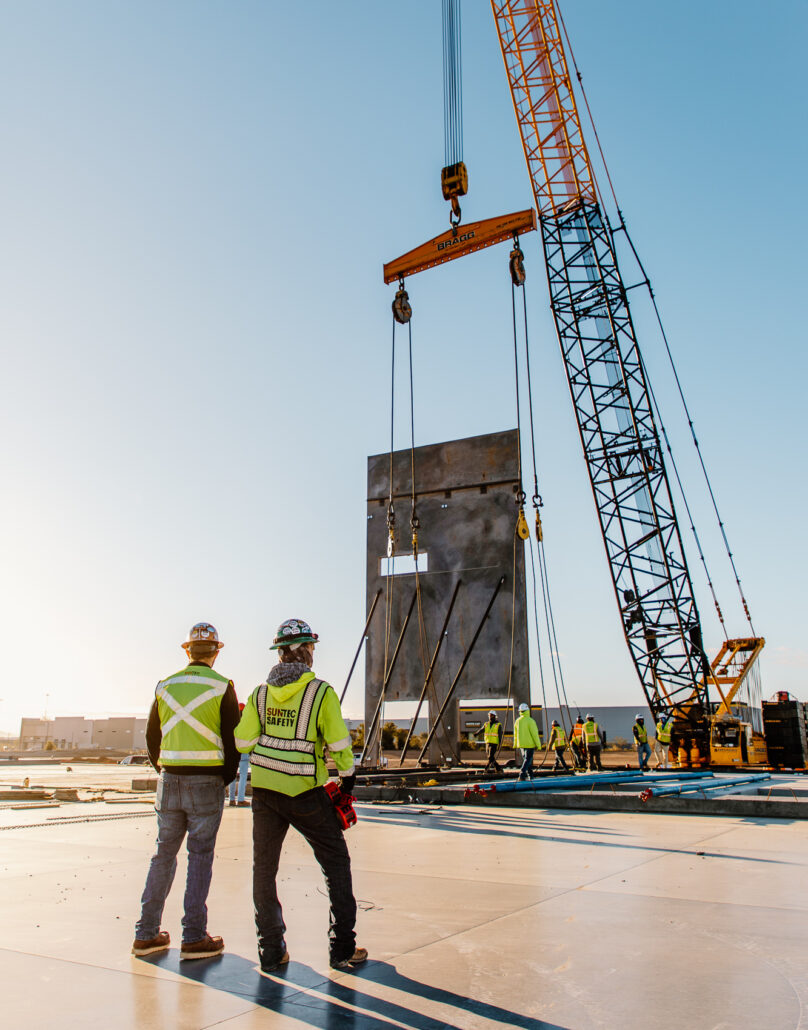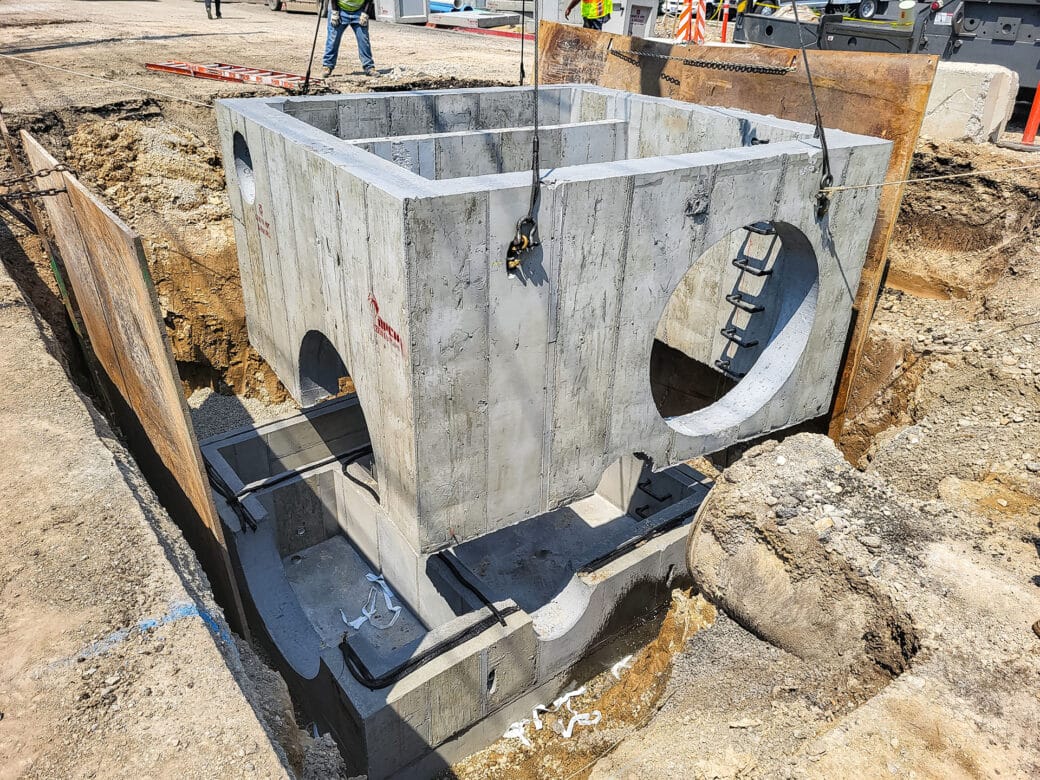The Necessary Role of Concrete Structure in Structural Integrity and Durability
When it comes to constructing a residential property, the structure is more critical than you might believe. Concrete foundations supply unmatched toughness and longevity, guaranteeing your structure can hold up against different ecological obstacles. Without a strong base, you take the chance of potential issues like shifting or fracturing, which can endanger security and value. Comprehending the nuances of concrete foundations might be the trick to preserving your financial investment for several years ahead. What should you consider next?
Comprehending the Relevance of Concrete Foundations
Concrete structures are important to the general security of any kind of structure, as they offer the necessary support needed to endure different lots and environmental conditions. When you assume about developing a home or a commercial room, the structure is the initial point you must take into consideration. It functions as a barrier against dampness, safeguarding your residential property from water damage. A well-placed concrete foundation also stops settling and moving, which can lead to cracks in wall surfaces and floors. You'll wish to ensure that the structure is effectively developed and reinforced, as this affects the longevity of your structure. Furthermore, a solid structure can enhance power performance by minimizing air leakages. Keep in mind, ignoring the relevance of a concrete structure can cause costly repairs down the line. Spending in a top quality foundation upfront is necessary for the honesty and resilience of your structure.
Benefits of Concrete Foundations for Structural Stability
While lots of variables contribute to a structure's structural stability, concrete structures provide unequaled durability and strength. You'll appreciate that concrete can endure severe climate condition, standing up to both moisture and temperature level changes. This strength indicates your structure is less most likely to experience splitting or changing over time, which can compromise its safety.Additionally, concrete's fundamental weight gives a strong base, stopping activity throughout natural occasions like earthquakes or floodings. When you pick a concrete structure, you're likewise opting for reduced maintenance; unlike wood, it won't rot or bring in bugs, conserving you money and time in repairs.Moreover, concrete's fire resistance uses included safety, guaranteeing your framework can withstand high temperatures without significant damage. On the whole, buying a concrete structure indicates you're focusing on the long-lasting stability and honesty of your structure, making it a smart option for any type of building job.
Common Kinds Of Concrete Foundations
When it involves developing foundations, recognizing the common kinds of concrete structures can assist you make notified selections for your job. The most widespread types consist of slab-on-grade, crawl area, and full cellar foundations.A slab-on-grade foundation is a basic, cost-efficient alternative, where a thick concrete slab is put directly on the ground. This type functions well in warm environments, as it lessens heat loss.Crawl room foundations elevate the home a little above ground, allowing for air flow and accessibility to pipes and electrical systems. This layout can assist prevent wetness issues.Full cellar foundations use additional living or storage space while supplying outstanding architectural support. They need even more excavation and are normally used in chillier climates to stop frost heave.
Elements to Take Into Consideration When Designing a Concrete Foundation

Finest Practices for Putting Up Concrete Foundations
When you're installing a concrete foundation, proper site prep work is vital to assure stability (West Coast General Engineering industrial concrete Rancho Cucamonga). You'll also need to comprehend support techniques to improve stamina and durability. Lastly, don't ignore the healing procedure, as it plays a fundamental role in accomplishing a solid foundation
Site Preparation Value
It might seem uncomplicated, appropriate site prep work is crucial for guaranteeing a strong and durable concrete structure. Beginning by clearing the location of any type of debris, plant life, or organic product that might compromise the structure's stability. Next off, examine the soil kind and compaction; you might require to dig deep into or add materials to produce a stable base. Degree the ground to guarantee also weight distribution and stay clear of clearing up issues later on. Setting up proper drain systems is likewise vital to stop water build-up, which can compromise the foundation gradually. Mark out the structure's measurements precisely to assist the pouring procedure. By complying with these actions, you'll establish the phase for a successful concrete structure that stands the examination of time.
Reinforcement Techniques Explained
Once the website is properly prepared, the next action in assuring a durable concrete structure entails applying effective support strategies. You should start by utilizing steel rebar, which gives tensile strength and helps avoid fracturing. Lay the rebar in a grid pattern, making sure it rises making use of spacers to maintain proper protection. Furthermore, take into consideration making use of cord mesh for extra support, specifically in locations based on hefty loads. Don't fail to remember to connect the rebar junctions firmly with cord. For bigger structures, fiber support can boost durability, reducing the risk of shrinkage cracks. Always follow local building ordinance and standards to ensure conformity. By using these reinforcement techniques, you'll considerably boost your structure's toughness and long life, laying a strong groundwork for your structure.
Curing Refine Basics
To assure your concrete structure remedies correctly, it is necessary to maintain adequate dampness and temperature level conditions right away after pouring. Start by covering the surface area with a damp burlap or plastic sheeting to preserve dampness. This keeps the concrete moisturized, protecting against splits and making sure stamina. imp source You should additionally keep check an eye on the temperature; perfect healing problems are between 50 ° F and 90 ° F. If it's also hot, mist the surface area routinely to avoid quick evaporation. For chilly weather condition, think about making use of insulating blankets to keep warmth. Aim for a treating period of at the very least seven days, as this is crucial for optimal toughness advancement. By following these finest practices, you'll improve your structure's toughness and longevity, making certain structural stability for many years to come.
Upkeep of Concrete Structures for Long Life
To keep your concrete structure strong and enduring, regular examinations are crucial. You must additionally guarantee efficient water drainage services remain in area to avoid water damages. If you spot any type of splits, addressing them quickly will conserve you from larger problems down the line.

Normal Examinations and Analyses
While routine evaluations and assessments could appear like a task, they're important for maintaining the stability of your concrete structure. By consistently looking for fractures, shifts, or indicators of wear, you can catch possible problems before they rise into costly fixings. Search for any water merging around the foundation or uncommon settling, as these can signal underlying troubles. It's likewise a good idea to keep an eye on any adjustments in your home's framework, like doors that stick or windows that do not open smoothly. Maintaining a record of your examinations helps track adjustments in time, permitting for positive upkeep. Ultimately, these evaluations guarantee your structure remains steady, sustaining the longevity and safety and security of your entire structure. Do not neglect this essential aspect of homeownership!
Reliable Drain Solutions
Regular examinations can expose issues like drain troubles that might compromise your concrete structure's security. To avoid garage foundation design water build-up, guarantee your seamless gutters and downspouts direct water far from the foundation. Installing French drains can successfully reroute surface area and groundwater, decreasing stress on your structure wall surfaces. Additionally, grading the dirt around your home aids guarantee that water flows away, rather than pooling near your foundation.Consider utilizing sump pumps in locations vulnerable to flooding, as they actively remove excess water. Frequently look for obstructions in drainage systems and clear them immediately. You'll protect your foundation's integrity and longevity by taking these positive steps. Keep in mind, efficient drain options are crucial for keeping a strong, long lasting concrete structure.
Motivate Split Fixes
When you observe splits in your concrete structure, resolving them immediately is necessary for preserving its long life. Tiny cracks can swiftly develop into larger concerns, compromising the structural integrity of your home. Routinely inspect your foundation for signs of damages, such as horizontal or upright cracks. If you find any kind of, don't wait-- fix them immediately. You can make use of epoxy shots or concrete patching compounds, which are effective for securing splits. Always follow the supplier's guidelines and think about consulting a specialist for substantial damage. Remember, prompt repair work not just improve your foundation's durability yet likewise save you money in the long run by protecting against much more extensive repairs down the line. Keep positive, and your foundation will certainly remain solid and secure.
Resolving Typical Concerns With Concrete Foundations
Concrete structures can deal with numerous problems with time, making it important to identify and resolve them promptly. One of the most usual troubles is splitting, which can occur as a result of temperature level fluctuations or resolving soil. If you observe splits, it's necessary to assess their size and depth; little splits can typically be secured, while bigger ones may need specialist evaluation.Water intrusion is one more significant worry. Excess wetness can lead to mold development and architectural wear and tear. Assurance correct drainage around your foundation to reduce this threat. In addition, look for indicators of changing or bowing wall surfaces, as this can indicate underlying issues with your foundation's stability.Regular assessments are basic to capture these problems early. If you find any type of worrying signs, do not hesitate to consult a foundation professional. By staying positive, you can preserve the stability and durability of your concrete structure, ensuring your home stays risk-free and secure.
Frequently Asked Questions
How Does Soil Type Affect Concrete Structure Efficiency?
Dirt kind considerably influences concrete foundation performance. If you've got large clay, as an example, it can cause changing and fracturing. Sandy dirt could cause working out. Comprehending your soil helps guarantee a secure structure.
Can Concrete Foundations Be Fixed if Damaged?
Yes, you can repair broken concrete structures. Depending upon the extent of the damages, strategies like epoxy shot or piece jacking can restore stability. It's ideal to get in touch with a specialist for efficient services.
What Is the Typical Life-span of a Concrete Structure?
A concrete foundation typically lasts 30 to 100 years, relying on variables like soil conditions, environment, and maintenance. You'll wish to watch on it to guarantee it continues to be healthy throughout its life-span.
Exist Alternative Products to Concrete for Foundations?
Yes, there are alternatives to concrete for structures, like steel, wood, or even recycled products. Each option has one-of-a-kind benefits and downsides, so you must consider your project's details requirements when picking the best material.
Exactly How Does Climate Effect Concrete Foundation Longevity?
Climate substantially affects concrete structure sturdiness (West Coast General Engineering industrial concrete Rancho Cucamonga). Extreme temperature levels, wetness, and freeze-thaw cycles can damage the product, causing cracks and architectural issues. You ought to consider regional climate problems when intending your foundation to assure long-lasting efficiency